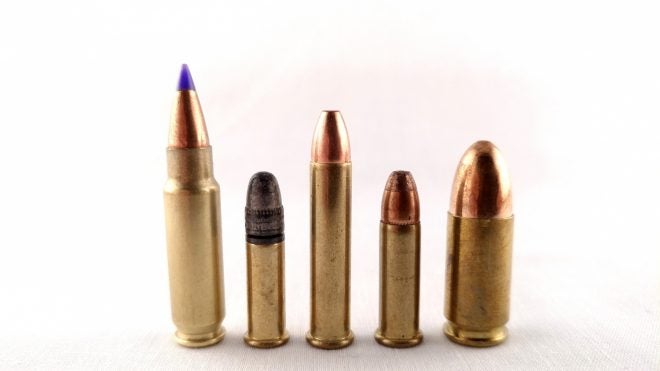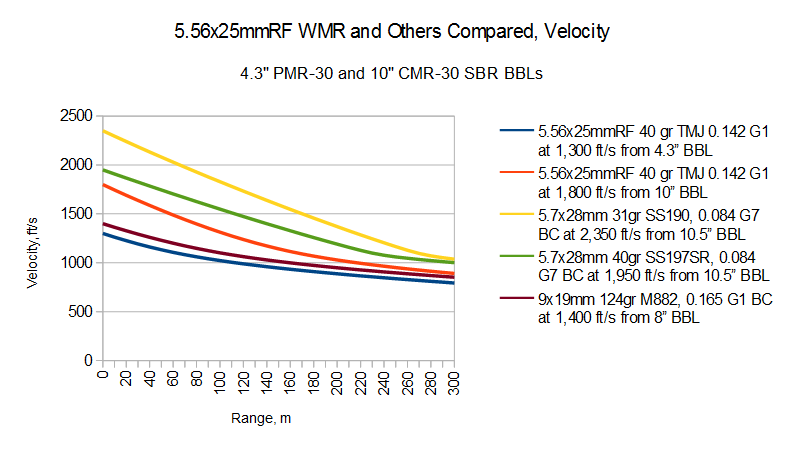So far in the Modern PDW Calibers series we’ve talked about small caliber, high velocity PDW rounds like the 5.7mm FN and 4.6mm HK, and we’ve tackled larger, punchier calibers like the 10mm Norma Auto and the 7.5mm FK. However, we still have not tackled the very extreme low end of the spectrum, that is rounds that are so small and impotent that many question their usefulness as antipersonnel rounds at all. However, small size brings with it some benefits in recoil and round weight, so it’s worth taking a closer look at this kind of round.
The most common round of this type, and one of the most common rounds in the world, is the rimfire .22 Long Rifle, however we will not be considering that round today. Rather, let’s take a look at its big brother, the .22 Winchester Magnum Rimfire. The latter has been more seriously proffered as a personal defense weapon caliber, and almost relentlessly compared to the larger centerfire FN 5.7x28mm round. Versus the .22 LR, it packs much higher initial energy and velocity, and is offered commercially with true jacketed bullets, aiding its penetration especially at longer ranges.
Ballistically, it compares to the 5.7mm FN and 9mm NATO like so:
From a pistol, the .22 WMR seems very much like a tiny pistol round, with similar drop characteristics. Notably, from this short barrel length the .22 WMR seems extremely range limited; it’s doubtful that the round would be a reliable killer – much less stopper – beyond 100 meters. From a rifle, however, the .22 WMR gains about another 200 yards, making it perhaps a useful antipersonnel round out to that distance, provided it is used in quantity. The .22 WMR does not seem to have enough velocity retention from either barrel to provide very much anti-armor capability at all, and it’s notable that the 5.7mm FN has as much velocity at 100m as the .22 WMR does at the muzzle, from a rifle.
No one expected the .22 WMR to be a stellar ballistic performer, however, and its primary benefits lie elsewhere. Like the 5.7mm FN, the .22 WMR has far less recoil than the 9mm NATO, and the .22 WMR is even substantially lighter than the 5.7mm. 40gr CCI Maxi-Mags clock in at 4.1 grams per shot on my scale, by far the lightest round we’ve measured yet in this series, and 37% lighter than the 5.7mm FN.
Considering just ballistics and recoil, the 5.7x28mm is by far the superior caliber to the .22 WMR, and our analysis could end there. However, the .22 WMR does offer the interesting advantages of extremely light weight and extremely small size, which immediately suggests the idea of a small-caliber “bullet hose” designed to carry hundreds of rounds of ammunition in a single magazine and rip them off at thousands of rounds per minute. Something like this:
 Your Privacy Choices
Your Privacy Choices



